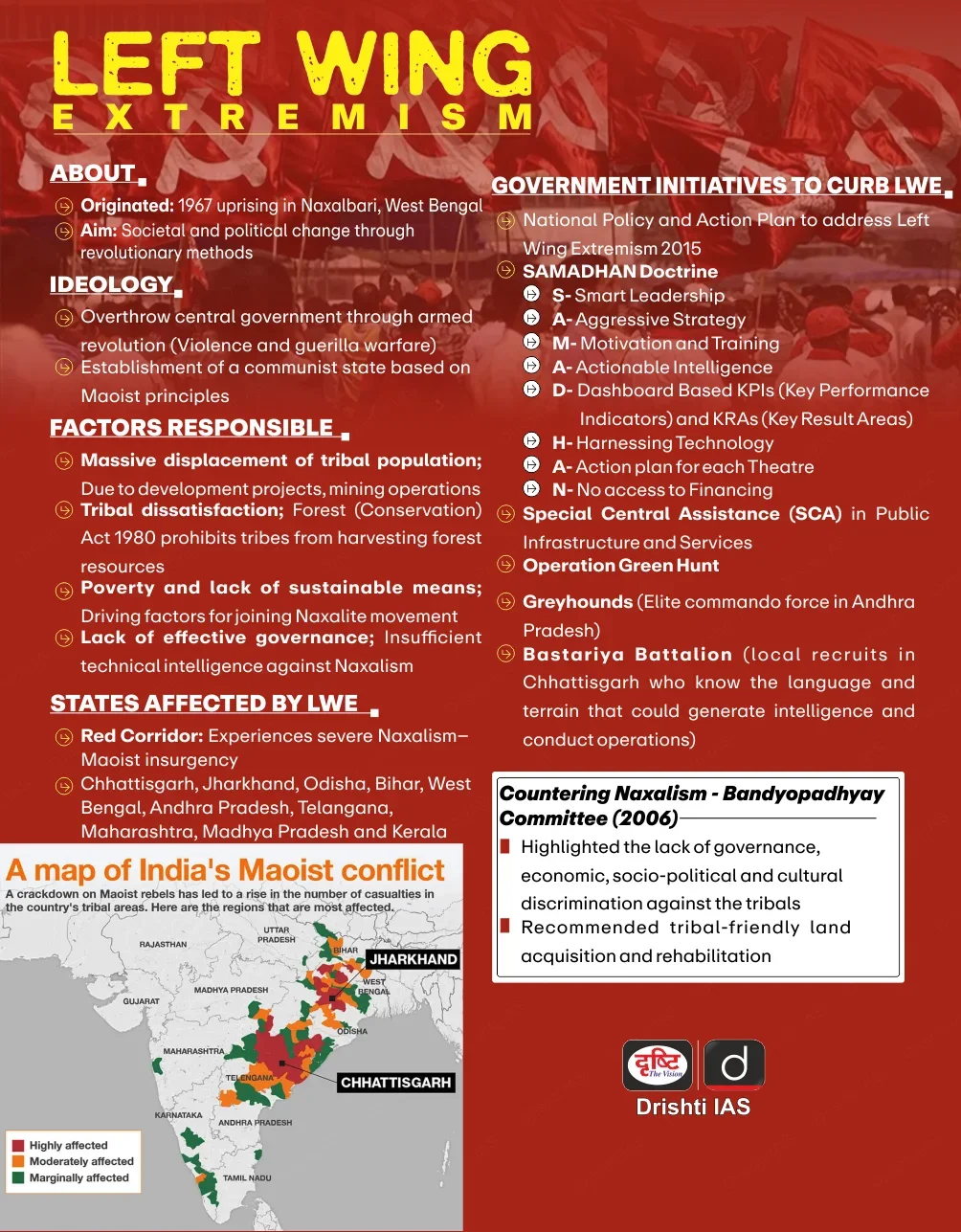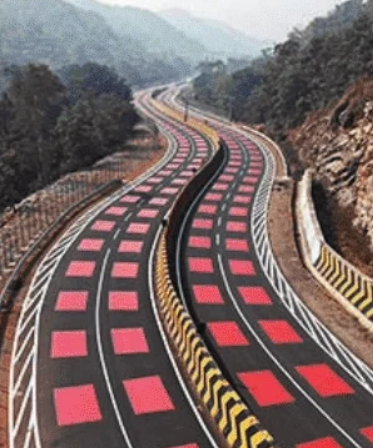Madhya Pradesh Switch to Hindi
MP CM Declares State Free of Naxalism
Why in News?
With the surrender of two Naxalites in Balaghat district, Madhya Pradesh Chief Minister Mohan Yadav claimed that the state was free of the Maoist menace.
Key Points
- Campaign: The surrender took place during the ‘Rehabilitation to Rejuvenation’ campaign, which aims to integrate former Naxals back into mainstream society.
- Strategy: The success was driven by joint operations between the CRPF and local police, which maintained consistent pressure on the Naxal network in the area.
- Leadership: The success is attributed to the determination of the Prime Minister and the guidance of Union Home Minister Amit Shah to eliminate Naxalism by 2026.
- Development: With the end of Naxalism, CM emphasized the region’s development, especially in areas like Mandla, Dindori, and Balaghat, while vowing to prevent Maoism's resurgence.
Madhya Pradesh Switch to Hindi
Wildlife Protection on MP Highways
Why in News?
The National Highways Authority of India (NHAI) introduced a 5mm thick "table-top red marking" on a 2 km stretch of the Bhopal-Jabalpur National Highway to improve road safety and protect wildlife.
Key Points
- Purpose: This initiative, part of a larger project to expand the highway from two to four lanes, aims to reduce wildlife-related accidents, particularly in areas near the Veerangana Durgavati Tiger Reserve.
- Design: The "table-top" red marking is a first-of-its-kind technique in India, using a bright red texture that reduces vehicle speed as drivers enter wildlife-sensitive zones.
- Additional Features: White shoulder lines were also painted to guide drivers and prevent them from veering off the paved road, enhancing safety for both vehicles and animals.
- Underpasses: NHAI constructed around 25 underpasses along the 11.9 km highway stretch to allow safe animal crossings, minimizing disruptions to their habitats.
- Cost and Coverage: The project, costing Rs 122.25 crore, covers an 11.9 km stretch of highway, with two kilometers specifically marked with the red tabletop technique.
- Accidents and Fatalities: Animal-vehicle collisions have been a significant issue, with 237 such incidents in Madhya Pradesh over the past two years, leading to 94 deaths.
- Global Precedent: The initiative follows international examples like Canada’s Banff National Park and the Netherlands' "ecoducts," which feature wildlife crossings and road safety measures.
- Wildlife Concern: The Bhopal-Jabalpur stretch passes through wildlife-heavy areas like the Nauradehi Wildlife Sanctuary, with animals such as deer, jackals, and tigers frequently crossing roads.
- Expected Outcome: The upgraded highway, along with the red markings and underpasses, is expected to reduce accidents, protect wildlife, and boost tourism and revenue by improving connectivity.
National Current Affairs Switch to Hindi
Prada Signs Kolhapuri Deal
Why in News?
Italian luxury brand Prada signed a Memorandum of Understanding(MoU) to launch a limited-edition collection of Kolhapuri Chappals, featuring about 2,000 pairs.
Key Points
- Made in India: The sandals will be made in Maharashtra and Karnataka, combining traditional Indian craftsmanship with Prada's contemporary design.
- Price & Availability: The Kolhapuri sandals will be priced around 800 euros ($930) and available at select Prada stores worldwide, as well as on its website starting February.
- Origin & Geography: It is handcrafted in Kolhapur (Maharashtra) and nearby districts like Sangli, Satara, and Solapur, dating back to the 12th–13th century, and was originally made for royalty.
- Craftsmanship: It is made using vegetable-tanned leather from cow, buffalo, or goat, and is fully handmade without nails or synthetic components
- Design Features: It is recognised for its T-strap shape, detailed braiding, and open-toe design, mostly in tan or deep brown shades.
- GI Tag Recognition: It was granted Geographical Indication (GI) status in 2019, covering eight districts in Maharashtra and Karnataka.
- A GI tag identifies products with a specific geographical origin and ensures only authorised users from that region can use the name.


.png)








.png)


.jpg)



 PCS Parikshan
PCS Parikshan




